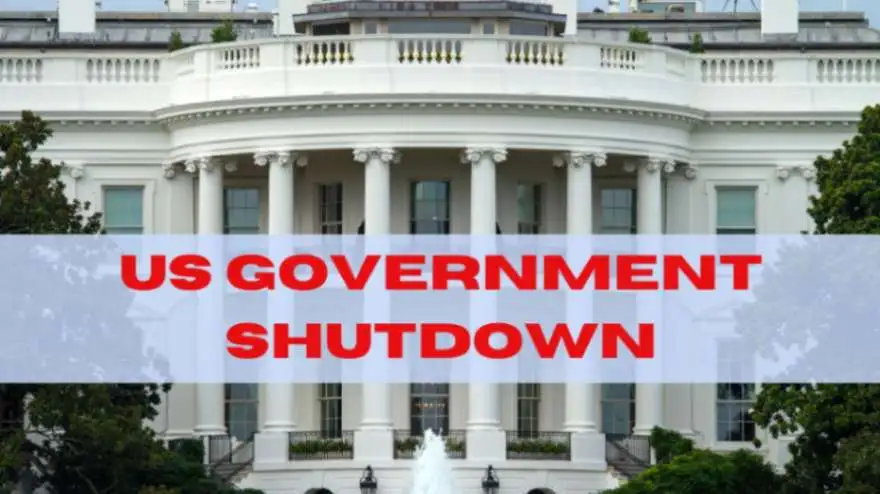The U.S. Congress avoided a government shutdown with a close vote on a temporary funding bill, preventing significant implications for the U.S. stock market.
Will the US government be able to end the uncertainty in the global equity market?
What is a government shutdown?
A government shutdown is a situation in which many government programs and services are suspended. It happens when the US government runs out of money or doesn’t have enough funds, as well as when Congress fails to enact a budget bill on time.
Understanding the US Shutdown Crisis 2023
The U.S. Congress managed to avert a government shutdown through a late-night vote in the House of Representatives. It had an overwhelming majority of 335–91. This bipartisan show of unity, with 209 Democrats and 126 Republicans supporting the measure, effectively ended a prolonged stalemate.
If the funding legislation hadn’t passed, federal agencies would have halted all non-essential work. Federal workers’ paychecks would have been delayed until the shutdown was resolved.
In the end, President Joe Biden signed the bill into law. It got the go-ahead from the Senate, which is under Democratic control. This happened despite some disagreement in the House of Representatives, where Republicans hold a slight majority.
Temporary Funding and What Lies Ahead
The stopgap funding bill for the U.S. market is like a quick break in a play. It keeps the government going for just 45 more days. But after that, Congress and the Senate will have more important talks to prevent another government shutdown in the U.S. and convert to human
If they can’t agree on things by November 17, that’s when the problems come back.
Around two million military personnel and another two million civilian government employees might have to wait longer for their paychecks.
This also raises the question of which government jobs will continue. For instance, airport security and border patrols will carry on, but there’s a possibility that important science research and programs aiding people in need might come to a halt.

The Challenge of Ukraine Funding
A key thing to note about this funding deal is that it didn’t include extra help for Ukraine. Even though the White House and Democrats in Congress wanted it, the funding deal didn’t have any new aid for Ukraine. This makes the situation more complicated, especially with Russia’s ongoing invasion of Ukraine.
U.S. President Joe Biden has been urging Congress to allocate an extra $24 billion for Ukraine and other global needs. Initially, the Senate had suggested a bipartisan plan to send about $6 billion to Kyiv. However, Democrats, wanting to avoid being blamed for a government shutdown, passed the House version of the bill, which didn’t include any aid. This highlights how geopolitical factors play a vital role in budget decisions.
Political Implications of the Government Shutdown
The recent shutdown crisis was primarily due to 21 Republicans who opposed their leaders. They blocked several short-term funding ideas because they wanted significant spending cuts. Their warning that they might replace Kevin McCarthy as speaker if a temporary measure gets support from Democrats has sparked discussions about the future of House leadership.
Their threat: They might replace Kevin McCarthy as speaker if a temporary measure gets support from Democrats. This has sparked discussions about the future of House leadership.
Warning of Fitch and Moody’s
Additionally, just before this government shutdown scare, Congress narrowly avoided a situation where the U.S. could have defaulted on its massive $31.4 trillion debt. This situation has raised concerns on Wall Street.
Moody’s, a rating agency, has warned that it could harm the U.S. creditworthiness. Currently, Moody’s gives the U.S. government the highest credit rating, “Aaa,” with a stable outlook. However, it’s worth noting that Fitch downgraded the U.S. government’s AAA rating slightly in August to AAA+, the same rating given by S&P Global back in 2011.
How will Dow Jones react to the government shutdown?
The S&P 500, Dow Jones, and Nasdaq were facing enormous volatility with a bias toward weakness. The shutdown of the US government was the main source of uncertainty. The US dollar index, rising bond yields, and increases in the price of crude oil were further triggers.
After a lackluster third quarter with losses in several stocks, the fourth quarter of the year has started.
In the last quarter, the S&P 500 declined by about 3.6%, the Dow Jones shed 2.6%, and the Nasdaq lost 4.1%. Particularly, this September was not a pleasing month for US equities, where the S&P 500 had a 4.9% decrease, the Dow fell by 3.5%, and the Nasdaq declined by 5.8%.
Also read Dow Jones: The 30 largest significant companies in the U.S.
However, following a dismal quarter, the US stock market will rebound on October 2 due to 45-day temporary funding. The dollar index, crude oil, bond yields, and other non-equity market indicators will continue to be of interest to investors.
On the Dow Jones, the pivotal area to the downside will be 33000. 34300–34500 will be a significant area of resistance on the upward trajectory. Therefore, the Dow Jones will consolidate within a range of 1000 points as of right now. Only above 34500 will there be a significant range breakout. But the Dow Jones will confirm a trend reversal if it closes below 33000.
Conclusion
The recent avoidance of a government shutdown has finally ended the uncertainty that could have impacted the U.S. stock market on a large scale. However, the volatility will remain in the market until an optimum resolution comes from Congress.
It’s also important to remember that while government shutdowns can create uncertainty, they typically have only limited and temporary effects on the market. Nonetheless, investors and traders on Wall Street will have to be aware of the political developments during this temporary funding period of the next 45 days.




